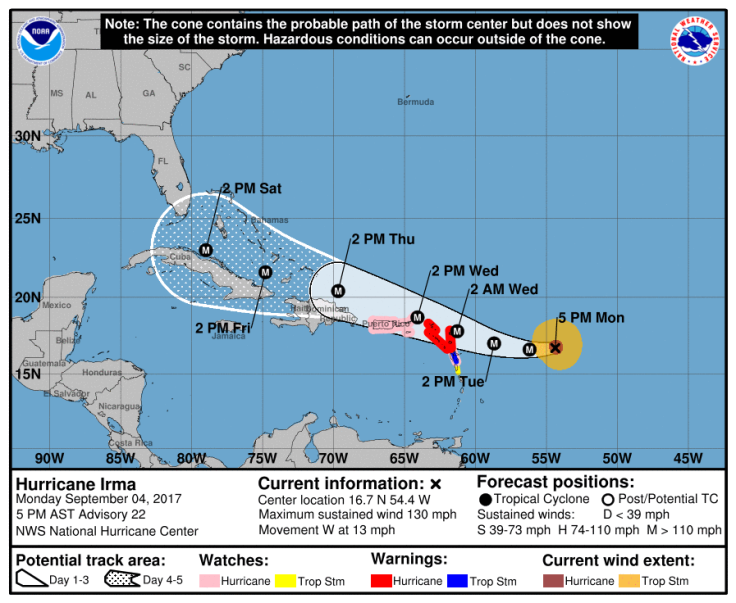Hurricane Irma Leads Florida Governor To Declare State Of Emergency

Just a week after Hurricane Harvey devastated parts of Texas and Louisiana, Hurricane Irma is now threatening to do the same to Florida. On Monday, Governor Rick Scott declared a state of emergency in the Sunshine State as the storm approached.
As of Monday evening Irma was traveling west at about 13 miles per hour toward Puerto Rico and other islands in the tropical area. The hurricane had a maximum wind speed of 130 mph, making it a category four storm while it was still out in the Atlantic.
Scott was urging Florida residents to plan for the storm and to keep track of forecasts as it nears the state later in the week. National Oceanic and Atmospheric Administration predicts that the storm will get to Florida around Saturday morning at the earliest, although it’s difficult to know what form the storm will be in then.
It’s a bit too soon to know what damage Irma will bring to Florida, but Irma is currently a very strong storm. If it remains a category four storm is would bring severe damage. The Saffir-Simpson scale classifies category four storms as storms with winds between 130 and 156 mph. The damage these storms can do is extensive. Well built homes can lose roofs or exterior walls. Additionally, trees will snap or uproot and power lines will likely fall. The damage will make areas uninhabitable for weeks or months, according to the scale.
Some fake forecasts were showing up on social media accounts over the weekend predicting that Irma would be making landfall far earlier than possible. One Facebook post even showed that Irma would be passing Florida and hitting Texas. These were fake forecasts. To be sure of legitimate forecasts, check NOAA or a reputable weather provider.
NOAA will continue forecasting the storm and updating its Irma information page, which is a good place to check the path of the storm as well as the expected wind speed probabilities and their arrival times. As of Monday evening, there were some hurricane warnings and watches as well as tropical storm warnings.
The difference between a warning and a watch is that a warning means storm conditions — whether it be a tropical storm or hurricane — are expected within the warning area 36 hours from issue. A watch on the other hand means that tropical storm or hurricane conditions are expected in 48 hours in the watched area.
Watches and warnings as well as other information regarding Irma can be found on NOAA’s website. There are also a number of apps that give updates about the latest forecasts and warnings or watches in the area. Some apps even have safety features that can tell users where shelters are or whether their friends or family are safe.
© Copyright IBTimes 2024. All rights reserved.





















